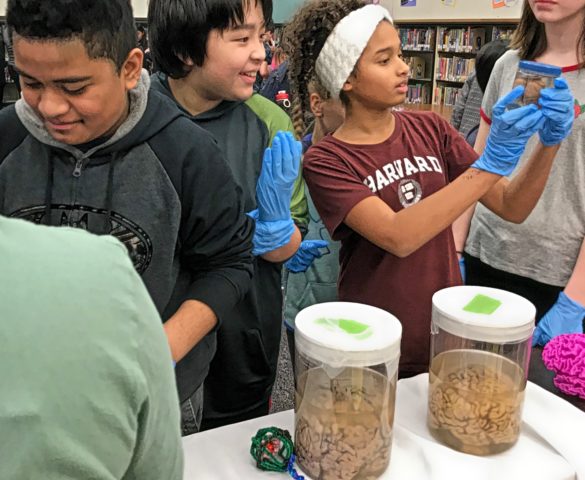Wy’East is the resonant Wapato tribal name for Oregon’s tallest mountain, currently snow-capped Mount Hood, re-named by white settlers after a British Admiral who both fought against the United States – and never set foot in the Pacific Northwest…
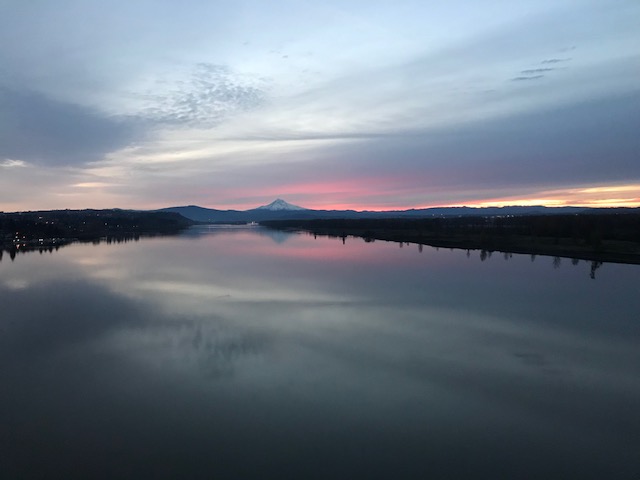
LEARN MORE: 7 Northwest Mountains Named For White Men
LEARN MORE: KEEPER OF THE FIRE (Tale of Wy’East from “Gathering the Stories”)
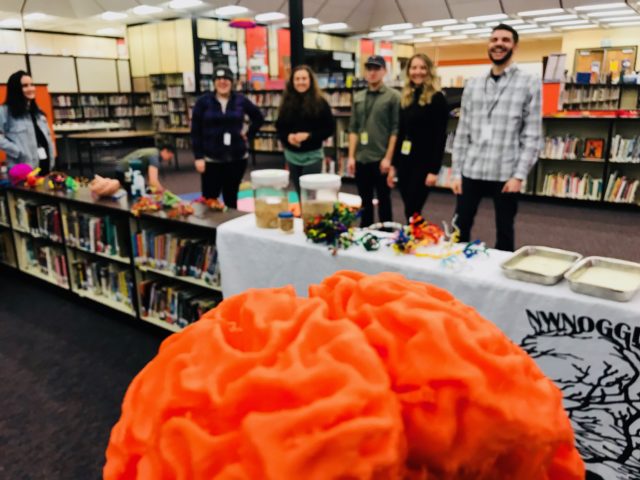
Wy’East is also a middle school in Washington state’s Evergreen School District, which responded positively to research revealing the adverse effects of early start times on academic achievement (and on adolescent brain development, and mental health) – by moving first period for most of their students until after 8:30am…

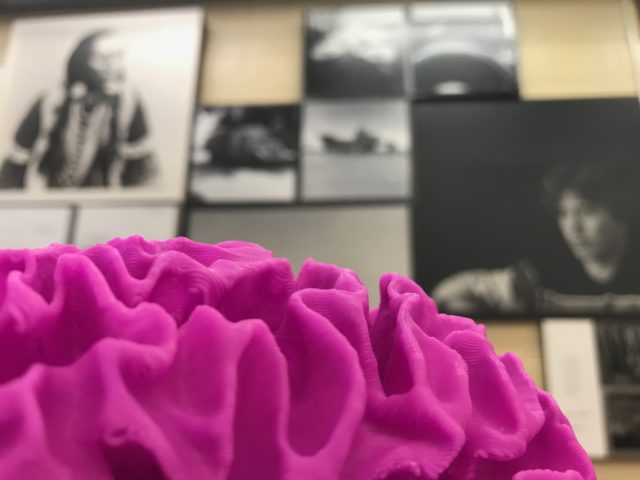
LEARN MORE: Evergreen to change high school start times
LEARN MORE: Sleep habits, academic performance, and the adolescent brain structure
LEARN MORE: School Start Times, Sleep, Behavioral, Health, and Academic Outcomes
LEARN MORE: Noggins in Nod
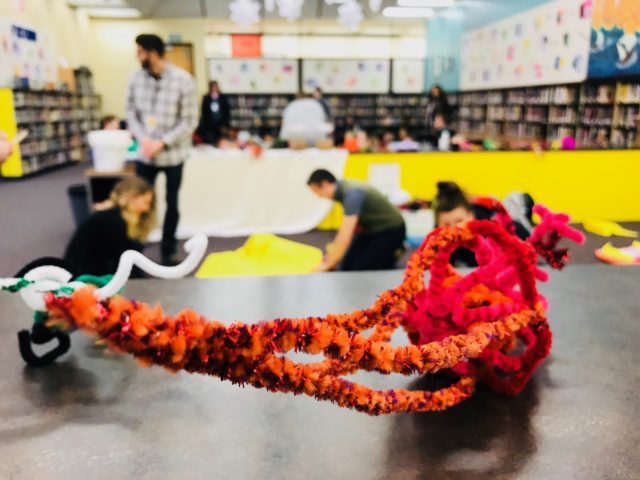
We arrived at Vancouver’s Wy’East with an enthusiastic, community-oriented crew of Noggin volunteers, including Austin Lewis, Shawna Erickson, Jade Osilla and Aliese Poole from Portland State University, Kayla Townsley and Deza’Rae Collins (both NIH BUILD EXITO scholars from PSU working in labs at OHSU), advanced cerebrum wrangler Joey Seuferling (a Noggin Resource Council member), and Jeehoon Jung and Veronika Lobova of nearby WSU Vancouver…

These are terrific developing experts in outreach who do outreach, and love communicating science through effective, arts-integrated community engagement – in contrast to (at least some) institutional administrators caught granting newspeak “Community Involvement Awards” for court-ordered community service, perhaps to justify the public tax dollars spent on their own excessive compensation and high profile sports…
LEARN MORE: Washington State Player Gets Community Service Award For Completing Court-Mandated Hours
LEARN MORE: WSU Makes “Wait, Wait Don’t Tell Me” on NPR
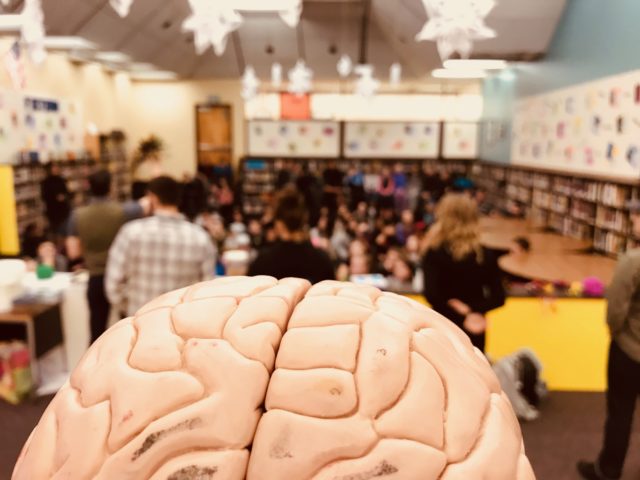
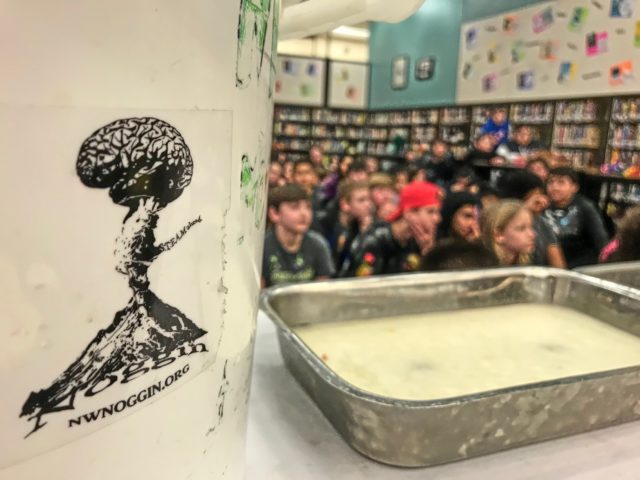
We were excited to meet with around 400 well-rested Wy’East 6th graders who had excellent questions about their own developing brains. The first group of 120 streamed into the colorful library at 9:45am, and kept arriving until 2:30 in the afternoon..!
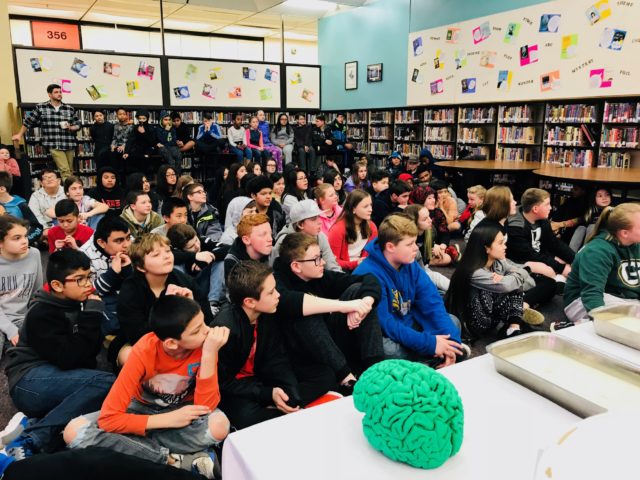
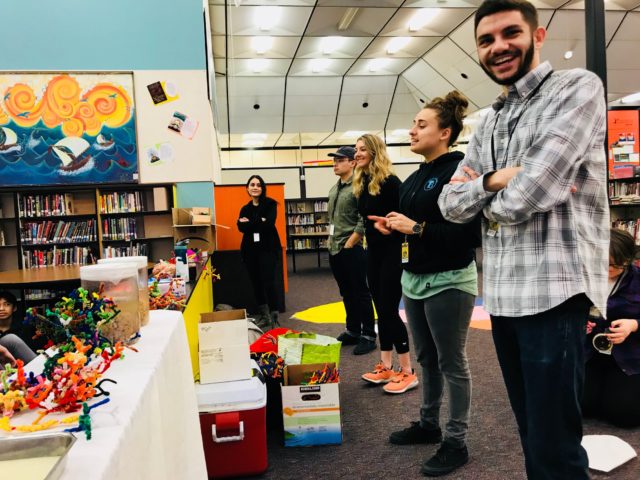
We began, as always, by introducing ourselves and the various programs and institutions we attend and serve, and described our own interests in neuroscience research and the arts. Many people can’t come to you – to an expensive conference, or to a museum exhibit or a university classroom. Not everyone has the resources, time, awareness, or sense of belonging or inclusion to participate, so it is helpful to see and be seen, and engage in genuine community involvement – in the community itself…
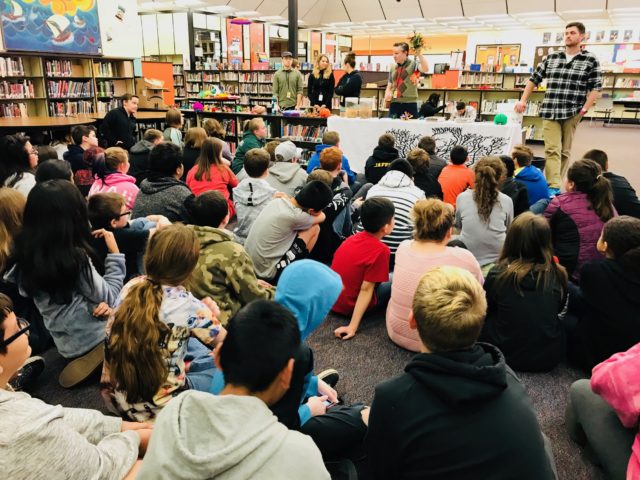
We thrive on this! And it’s powerfully rewarding. From PSU undergraduate Shawna Erickson, who plans to become a neurosurgeon: “I think this is a super valuable experience, I would’ve LOVED having this when I was younger. All I got was a worm in middle school. I think it’s really valuable, trying to get kids interested in something as wild as the brain.”
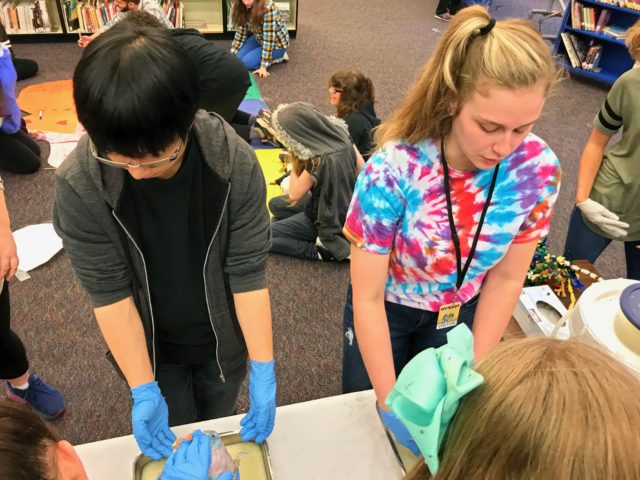
“When a person takes part in community action, his health improves. Something happens to him or to her biologically. It’s like a tonic.” – Studs Terkel
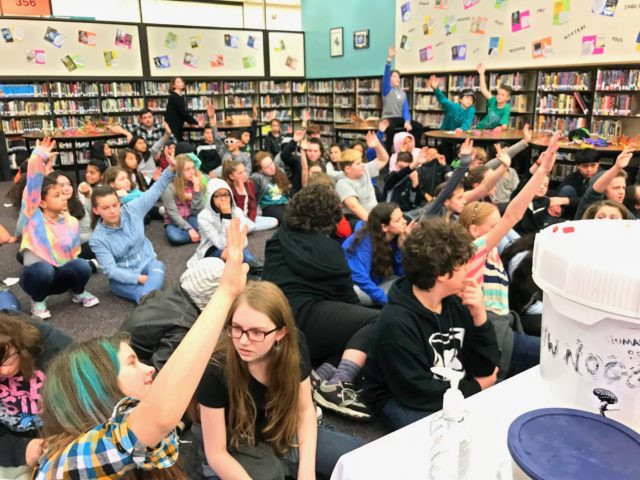
Studs Terkel is right – community engagement improves health (including our own), and opens doors to opportunity. Our volunteers are genuinely aware of other people in the community outside campus, conference, lab – aware of their questions, where they go to school, what they are curious about...
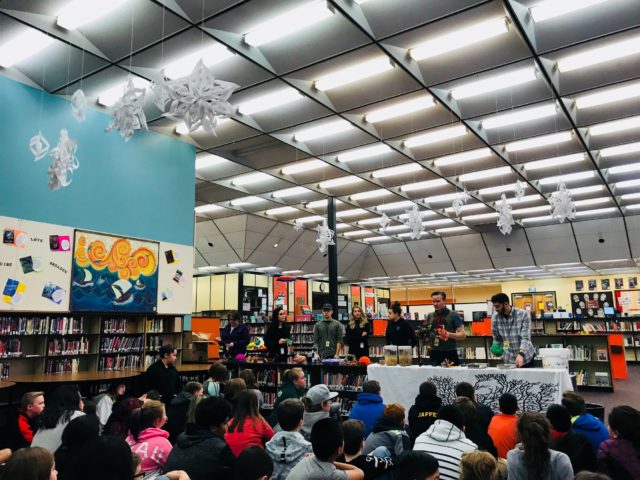
LEARN MORE: Noggin has the Juice!
LEARN MORE: Social Support and Resilience to Stress
LEARN MORE: Research Suggests Positive Correlation between Social Interaction & Health
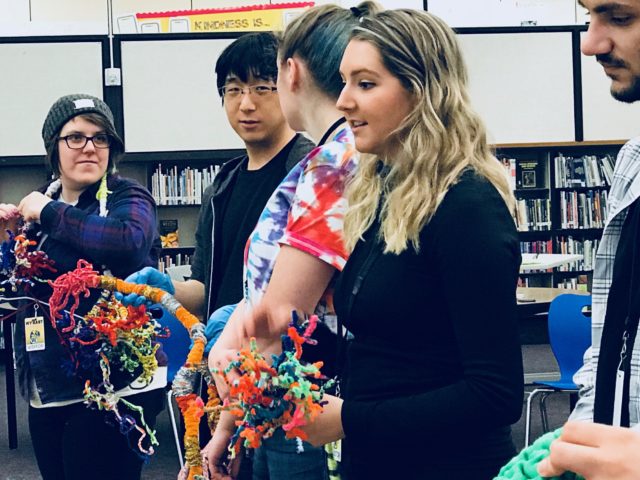
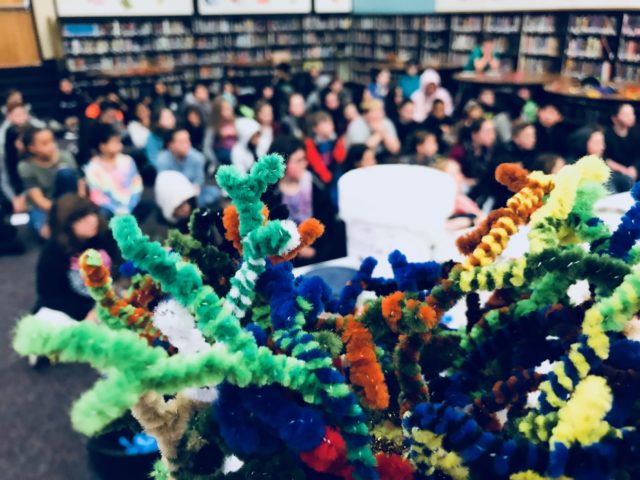
Memory, consciousness, traumatic brain injury, migraines and epilepsy were popular subjects today at Wy’East. “Why do some people get amnesia after a head injury?” asked one student…
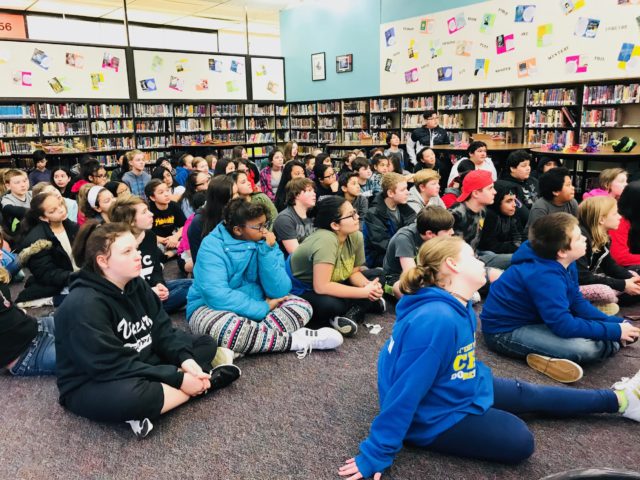
Memory involves the specifics of our lives and experiences, we explained, and there are several forms. For example, we remember skills – to walk, to drive, to throw a ball, etc. We also remember a broad range of aversions and enjoyments, how to speak and understand our language, and tons of verbal facts about our world, our country, and our families, friends and communities…
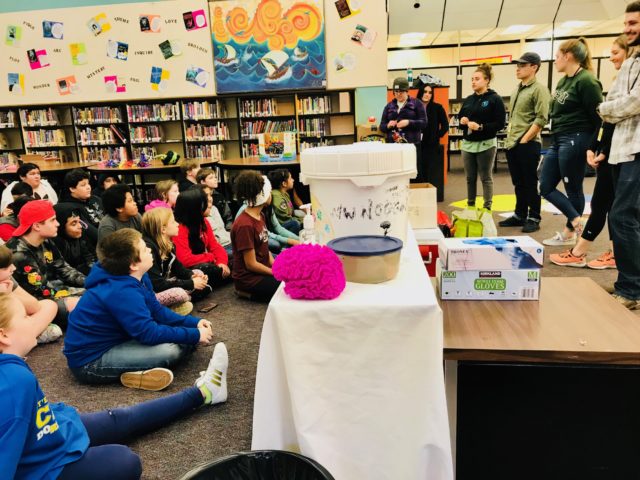
And of course we remember particular episodes and events where we are active participants. This is often the type of memory, known as episodic memory (and also declarative memory, and explicit memory) that we see lost with amnesia. Its formation and persistence is dependent, at least for the first 1 – 3 years, on a network of regions in our medial temporal lobes, including a seahorse-shaped structure called the hippocampus…

Image/text from Greece! Rome! Monsters! by John Harris. Illustration by Calef Brown.
We told the story of Henry Molaison, for decades known mostly by his initials H.M., who fell off his bicycle as a child, hitting his head and suffering subsequent seizures. In his 20’s he underwent surgery to remove areas of his brain where these excessive electrical storms were thought to originate – including the hippocampus in both medial temporal lobes…
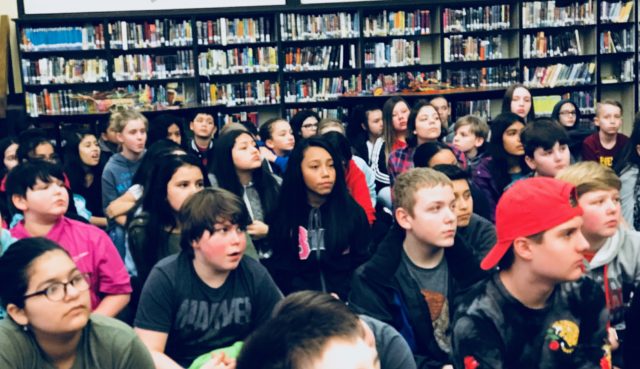
H.M. was left with an extraordinarily profound inability to form new memories. While he recalled details from his childhood, if he were distracted he couldn’t remember someone he’d met just moments before…

Henry Molaison. Photograph by Jenni Ogden, from her book “Trouble In Mind: Stories from a Neuropsychologist’s Casebook“
LEARN MORE: Henry Molaison: the amnesiac we’ll never forget
LEARN MORE: Conscious and Unconscious Memory Systems
Different networks in your brain accomplish different cognitive tasks. We asked if anyone had ever awakened in a new location – say at a friend’s house, or while camping, or on vacation, or because of a move of some kind – and for a moment couldn’t recall where they were. Suddenly it would all come flooding back, as medial temporal lobe brain regions, structurally linked to each other and to cortex by webs of insulated, white matter axon wires, snapped back into functional synchrony…
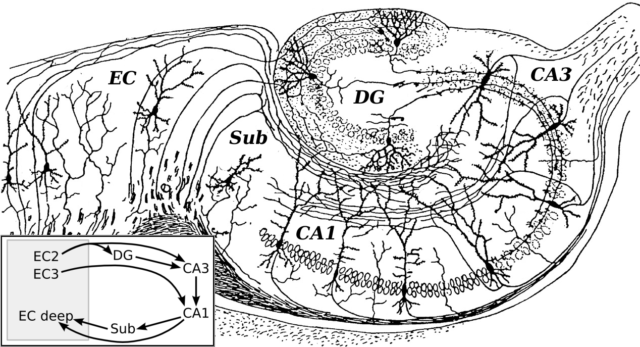
Hippocampus. Drawing by Ramon y Cajal
LEARN MORE: Structural Plasticity and Hippocampal Function
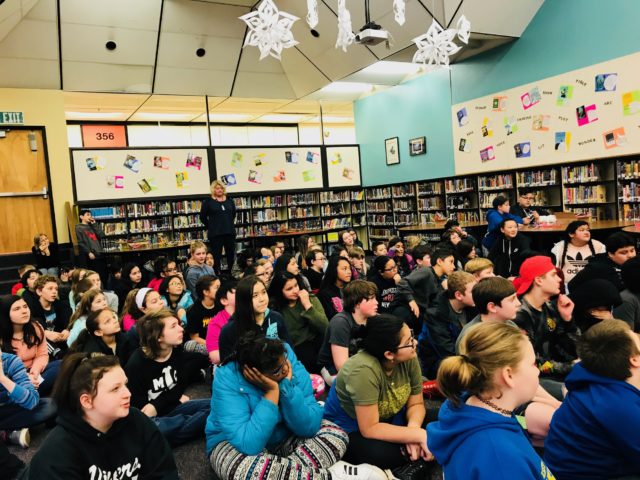
According to Deza’Rae Collins, an NIH BUILD EXITO volunteer from PSU: “The 6th graders of Wy’East had an immense amount of energy and interest to learn about the brain and art! Many students were so fascinated about being in front of or even touching a real-life brain that they took their own selfies. Before beginning the hands-on stations, they asked dozens of questions about injuries, such as ‘is the brain alive when in a coma?’ and ‘how do some people get amnesia?’ Other students questioned aspects of everyday life by asking ‘why do we get headaches?’ or ‘what is the purpose of studying the brain?'”

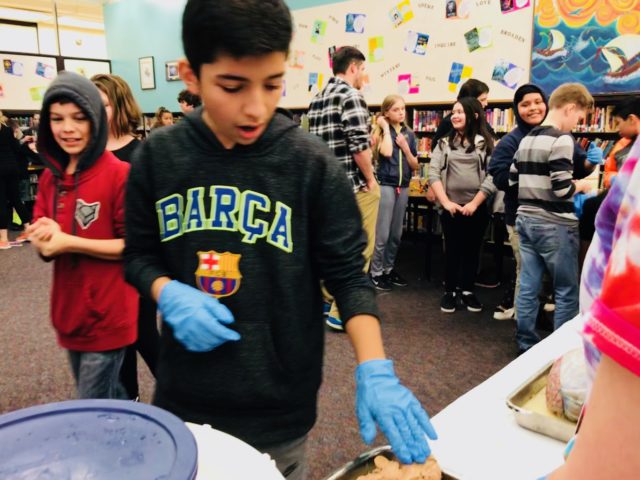
“Why is the monkey brain smoother?” “Why do some people not feel pain?”
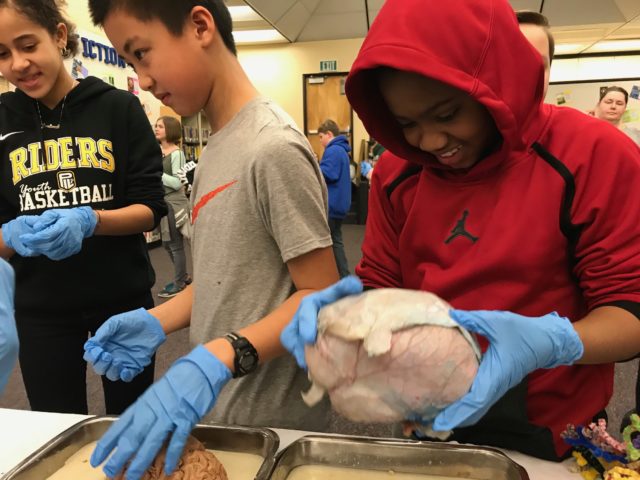
After introductions and initial questions, we broke down into groups. Everyone got to ask more questions while holding and examining real brains, crafting their own neurons out of pipe cleaners, and contributing their own drawings to one of two developing craft paper brain maps on the library floor…
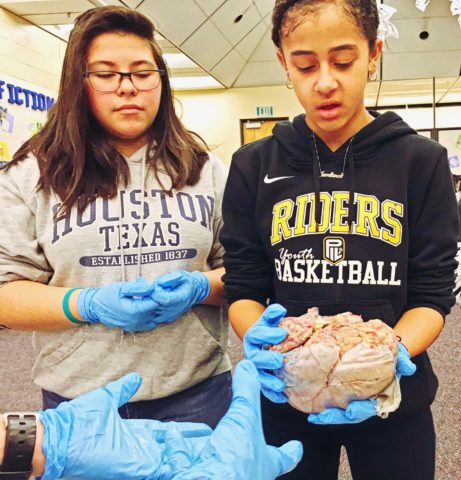

“When (Patriots wide receiver) Brandin Cooks got knocked out in the Super Bowl, how did that affect his brain..?”
Students were fascinated to learn that traumatic brain injuries can not only bruise and injure surface regions of the cortex, but also pull and tug out synaptic connections, impairing the ability of networks like those in the medial temporal lobe to effectively share and process information essential for memory, and other cognitive and perceptual processes we rely on every day…
LEARN MORE: What a lifetime of playing football can do to the human brain
LEARN MORE: Clinicopathological Evaluation of Chronic Traumatic Encephalopathy in Players of American Football
LEARN MORE: Consequences of Repetitive Head Impacts and Multiple Concussions
LEARN MORE: Protecting Noggins @ the Newmark
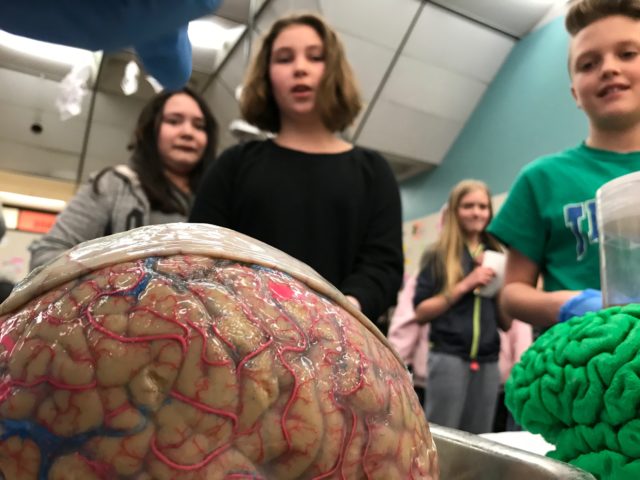
“I’m protecting my brain!”
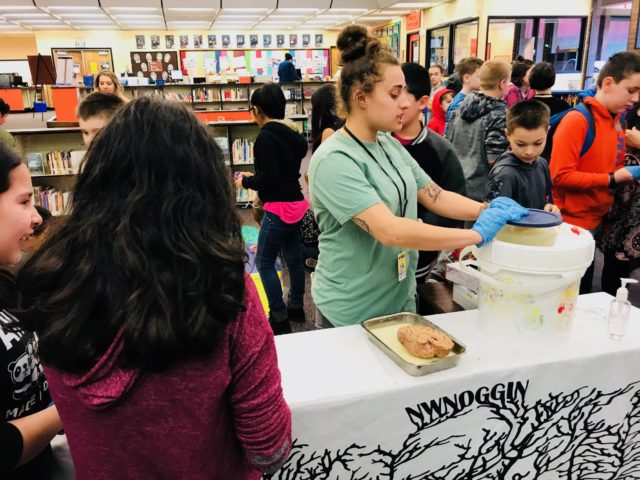
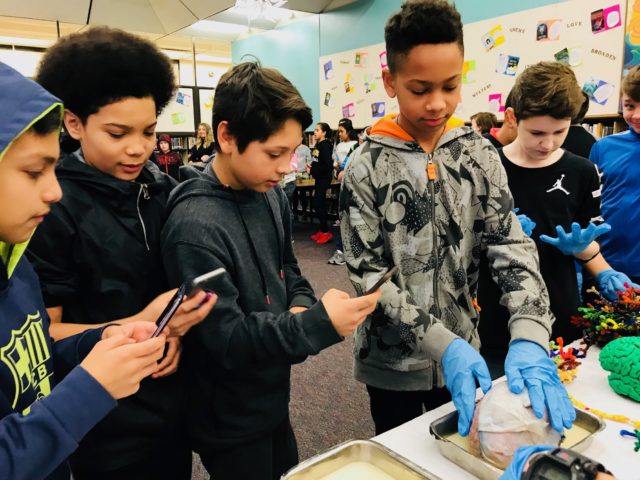
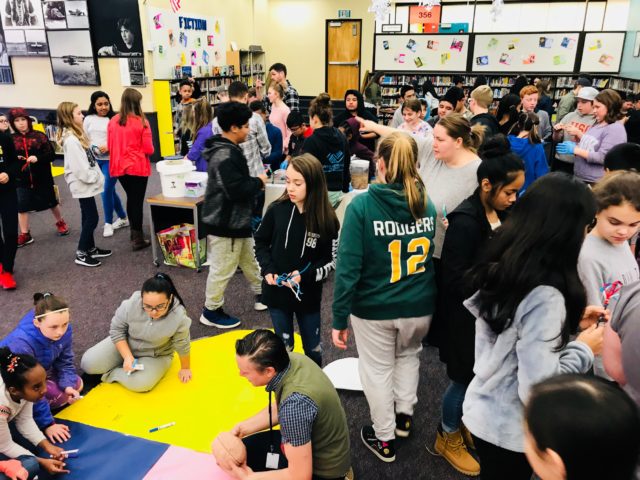
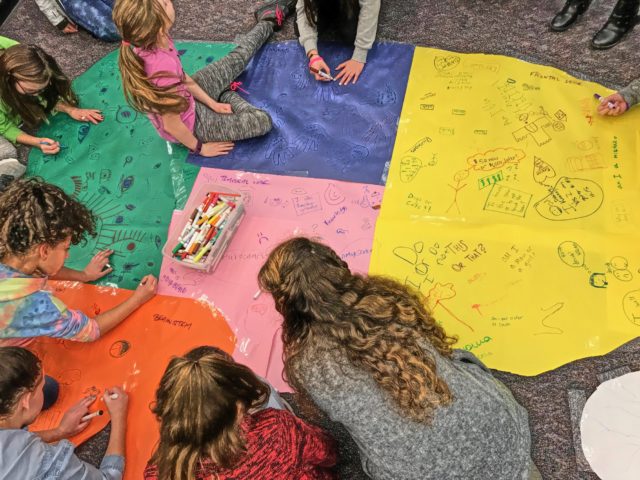
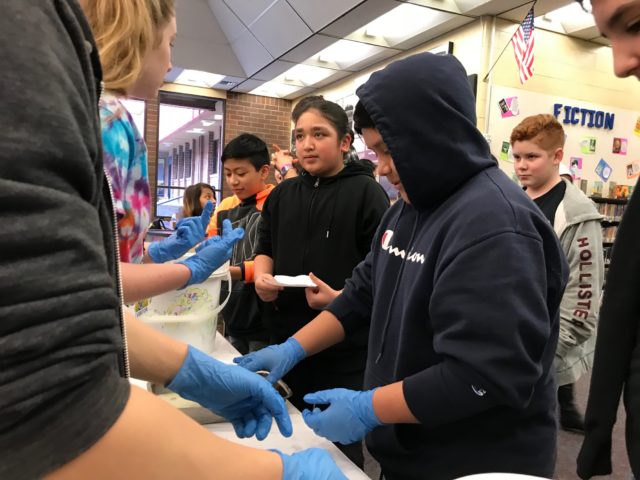
“What causes migraine headaches?”
LEARN MORE: NIH Migraine Information Page

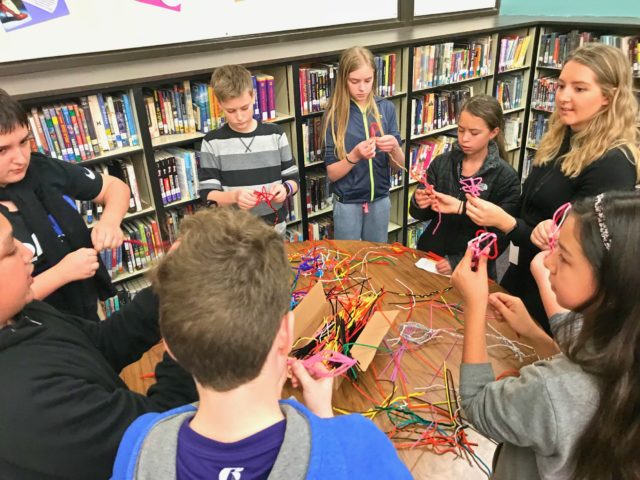
Active learning in smaller groups; hands and eyes engaged in projects…
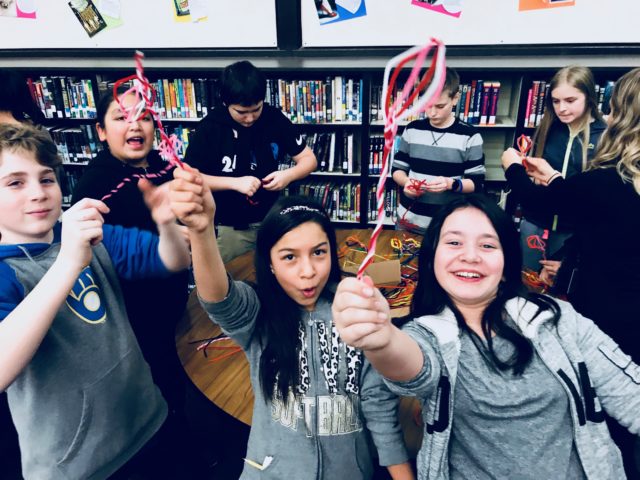
From Joey Seuferling (a better candidate for a Community Involvement Award 
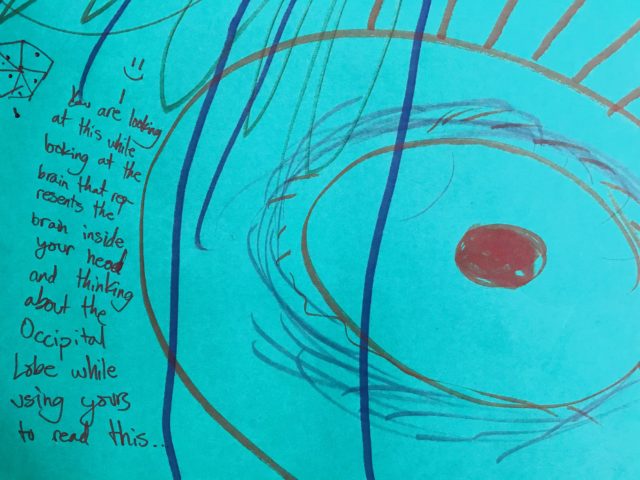
“You are looking at this while looking at the brain that represents the brain inside your head and thinking about the occipital lobe while using yours to read this…”
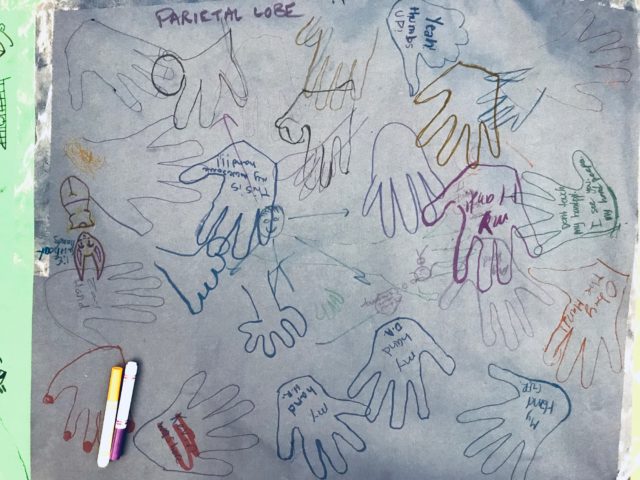
The parietal lobe…
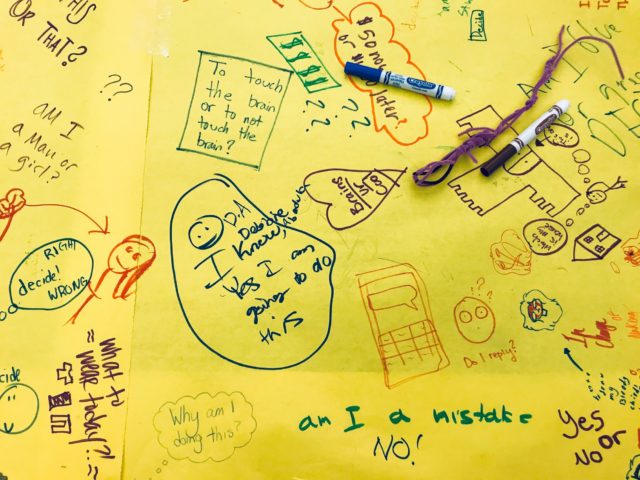
Some complex ideas from the frontal lobes…
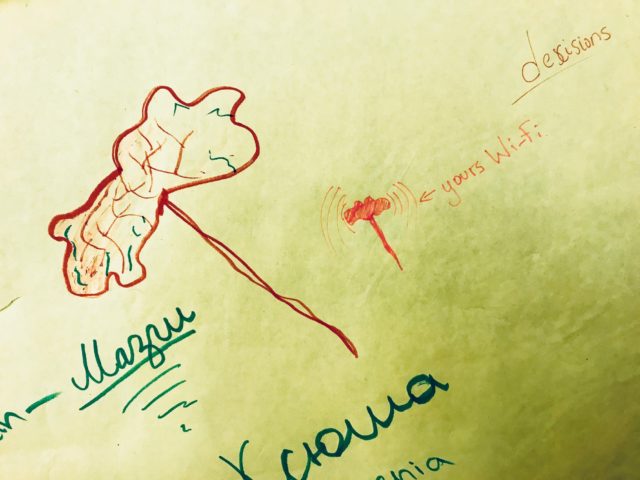
The frontal lobe: “your WiFi”
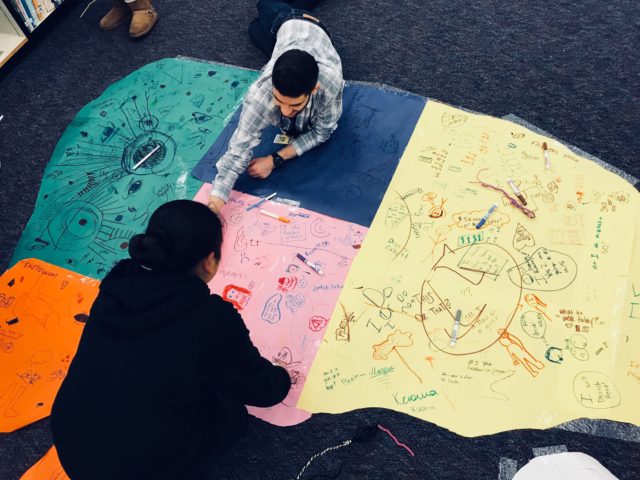
LEARN MORE: STEAM Art Projects
LEARN MORE: Kayla Townsley – The neuroscience of teaching art & science
LEARN MORE: Joey Seuferling – Changing the world, one brain at a time
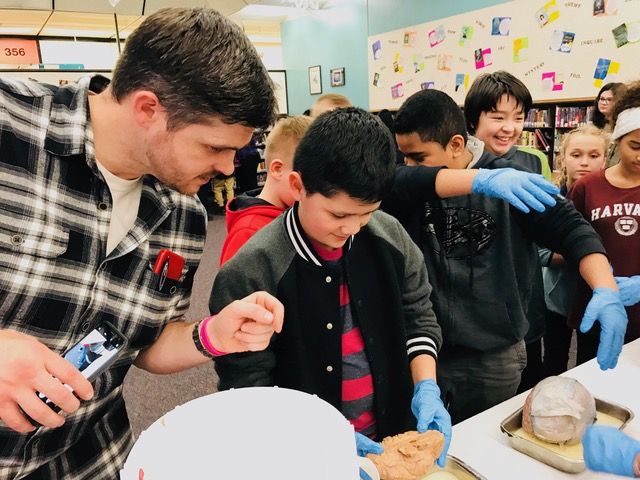
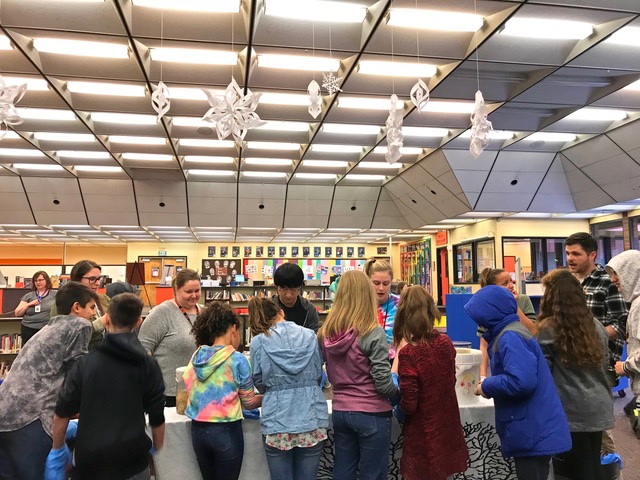
Many thanks to enthusiastic science teachers Aubrey Wilson and Dan Thompson, the hundreds of curious 6th graders with great questions and ideas, and other teachers and staff who warmly welcomed us to Wy’East…
